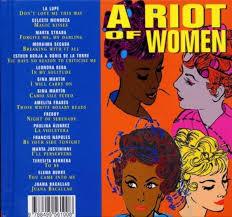Riot Women: The Rising Force in Activism

Introduction
The role of women in social movements and riots has gained increasing attention in recent years, highlighting the vital part they play in shaping protests and driving change. With numerous global events reflecting their significant influence, the emergence of ‘riot women’ showcases how female activists challenge societal norms and fight for equality, justice, and recognition across various sectors.
Women Leading the Charge
Notably, the past few years have seen women at the forefront of protests from the Black Lives Matter movement in the United States to recent demonstrations in Iran against oppressive regime policies. These ‘riot women’ have often been instrumental in mobilising fellow activists, showcasing their leadership capabilities and resilience. In many cases, women are not merely participating—they are leading and strategising, often serving as the voice of communities that have been historically marginalised.
Recent Events Highlighting Women in Activism
For example, during the protests sparked by the murder of George Floyd in 2020, women across various demographics emerged as prominent leaders, utilising social media platforms to organise movements, share information, and provide support to those on the ground. Similarly, in Iran, the recent uprising following the tragic death of Mahsa Amini in police custody saw women taking significant risks, challenging restrictions on their rights, and advocating for broader democratic reforms. Their bravery and determination have inspired a global response, prompting international conversations about gender equality and women’s rights.
The Significance of Riot Women
The increasing visibility and impact of women in these movements highlight a critical shift in how society views female activism. Riot women are redefining power structures and challenging the notion that protests are male-dominated spaces. This change calls for greater recognition of the roles women are playing—and have always played—in fighting against injustice. The diverse backgrounds of these activists also underscore the need for an intersectional approach to feminism and social justice.
Conclusion
As we observe the evolution of riots and protests globally, the contributions of women are becoming undeniable. Their stories and leadership styles are reshaping narratives around activism and social change. Going forward, the rise of riot women will likely continue to influence future movements, inspiring more women to join the fight for equality and justice. The significance of their contributions cannot be understated; they are paving the way for future generations to question status quo norms and persist in advocating for a fairer world.
